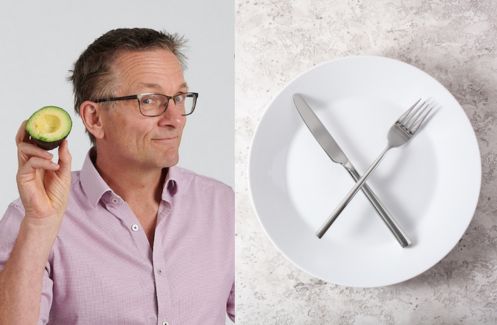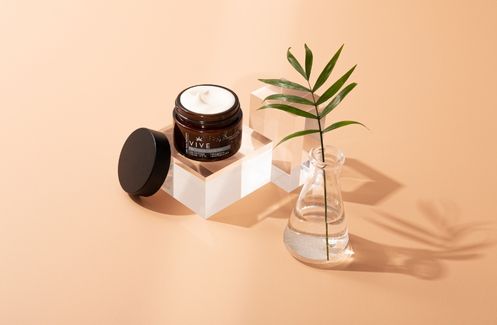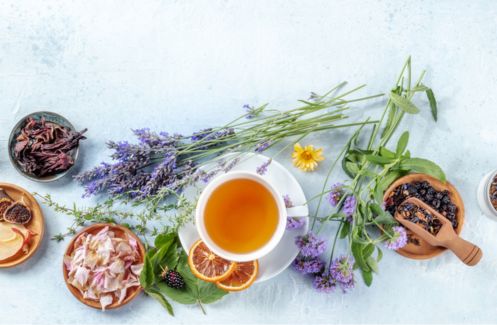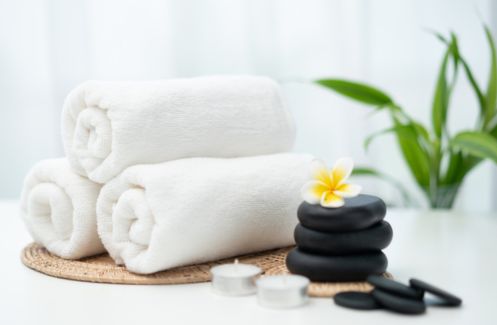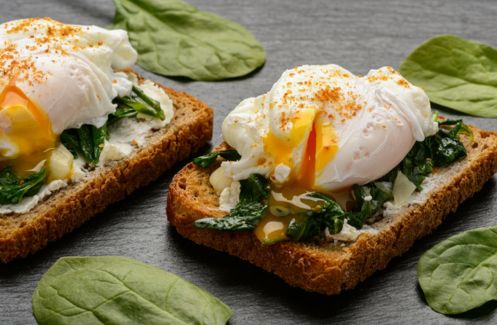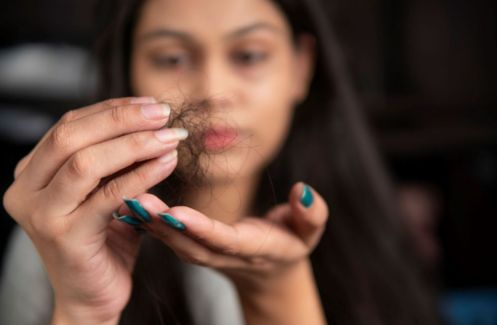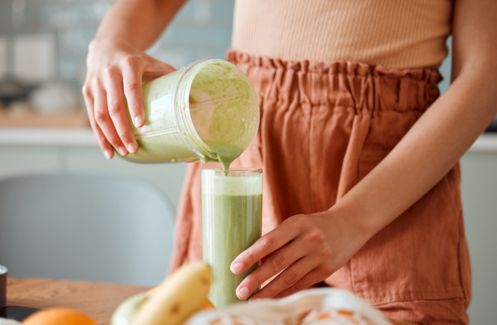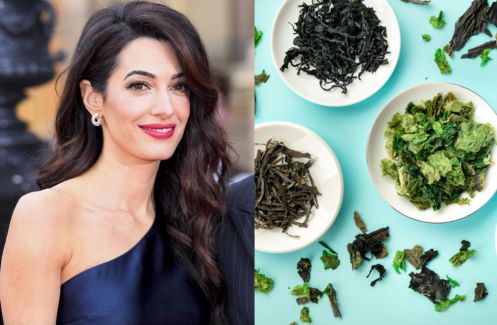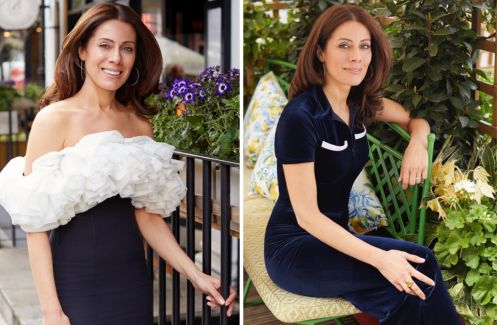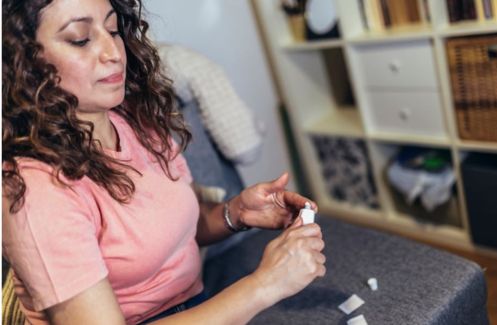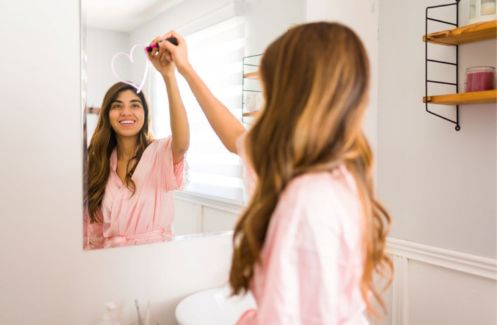Celebrities like Scarlett Johansson are freely talking about polyamory, but are people really doing it? We asked social scientist Dr Catherine Hakim and polyamorous mother and writer Louisa Leontiades – this piece will make you think
In January, it was rumoured that actress Scarlett Johansson and her husband, French journalist Romain Dauriac had split after two years of marriage, first getting together in 2012. At the Oscars, this was pretty much confirmed as Scarlett walked the red carpet without wearing her wedding ring. But not before she commented on her views of monogamy. In an interview with Playboy for the published March/April edition, Scarlett said:
‘I think the idea of marriage is very romantic; it’s a beautiful idea, and the practice of it can be a very beautiful thing. I don’t think it’s natural to be a monogamous person. I might be skewered for that, but I think it’s work. It’s a lot of work. And the fact that it is such work for so many people — for everyone — proves it is not a natural thing.’

And this wasn’t the first time 32-year-old Scarlett spoke about the topic. According to Bustle, Scarlett has previously said, whilst married to Ryan Reynolds, that monogamy wasn’t a ‘natural instinct’. She isn’t alone in the Hollywood world; the likes of Cameron Diaz and Will Smith have also hinted at interests in polyamory – often called ‘poly’ – which, is when a person is open to having more than one romantic or intimate relationship at a time, with the knowledge and consent of all their partners.
Monogamy isn’t a natural instinct
‘I don’t know if anyone is really naturally monogamous’, Cameron Diaz said. ‘We all have the same instincts as animals. But we live in a society where it’s been ingrained in us to do these things,’ she told Instyle. In 2013, Will Smith faced a cheating scandal, after he was seen getting cosy with co-star Margot Robbie. But this instead turned to open marriage speculation with his wife Jada Pinkett Smith, after she said ‘I trust that the man that Will is, is a man of integrity. So, he’s got all the freedom in the world. As long as Will can look himself in the mirror and be OK, I’m good’, Jada Smith told Huff Post Live. She later described their relationship as a ‘grown’ one, rather than an open one.
MORE: Inside an open marriage
Who is practising polyamory?
Interest in poly is on the rise, with evidence suggesting society is more understanding of the lifestyle in a similar way to its acceptance of changing romance and homosexuality. A study looking into Google Trends over the past ten years (2006-2015) found that searches for words related to poly and open relationships has significantly increased. This is reflective in American society, whereby nearly a staggering half of men and one third of women said that their ideal relationship would be non-monogamous to some degree. The 2016 study by YouGov on a thousand adults however, showed that far fewer are practising anything other than monogamy, with just 34 per cent of men and 24 per cent of women in a non-monogamous relationship.
Half of men and one third of women said their ideal relationship would be non-monogamous
Dating apps such as OkCupid are attempting to make poly achievable and easier for people interested, by creating a new feature ‘Couples Linking’ last January. The feature is open to people who identify as ‘seeing someone,’ ‘married’ or ‘in an open relationship’ and are looking for others to join their relationship, including single people. OkCupid recognized the growing prevalence of poly among its users, who are generally 35 or younger; according to the site’s data, 42 percent of its members would consider dating someone in an open or poly relationship.
The difference in percentages between men and women’s sexual attitudes is significant, according to social scientist Dr Catherine Hakim. In the American YouGov study, men are more interested in the idea of non-monogamy than women, which can be said the same for Europe. In her new book, The New Rules, Hakim presents her analysis of over 30 rigorous national sex surveys on sexual attitudes and infidelity. Where surveys have asked people about their relationship preferences, they have found men are three times more likely to prefer several concurrent lovers. In Sweden, 20 per cent wanted several concurrently versus six per cent for women, and similarly in Estonia, 27 per cent of men versus seven per cent of women.
‘The key finding from all the surveys is that a substantial and sometimes enormous difference between men and women still continue in sexual attitudes and sexual behaviours’, Dr Hakim tells Healthista, referring also to affairs, masturbation and ideal frequency of sex.
Only attractive and successful people are getting away with it, because they are at the top of a sexual hierarchy
Despite society showing a measurable swing towards non-monogamous relationships, Dr Hakim points out this isn’t a new concept, and has been around for longer than societies interest in it. ‘The most attractive, richest and most powerful people have always been able to have as many lovers as they want. Chinese emperors would have hundreds of concubines. Aristocratic families would actually donate a daughter to the emperor’s harem because they thought she might put in a good word and they would get benefits’, says Dr Hakim.
MORE: 5 easy ways to make your relationship stronger
With celebrities declaring their flexibility with monogamous lifestyles, and moving on from one partner to the next, it could appear a poly attitude is not only increasing, but easy to do. Dr Catherine Hakim says, in her opinion, it is in fact the reality of polyamory that only attractive and successful people getting away with it, because they are at the top of a sexual hierarchy. Dr Hakim coined the term ‘erotic capital’, which is a combination of beauty, social skills, good dress sense, physical fitness, liveliness, sex appeal and sexual competence, and she believes those who have more erotic capital, have advantages and get away with more.
Dr Hakim coined the term ‘erotic capital’, which is a combination of beauty, social skills, good dress sense, physical fitness, liveliness, sex appeal and sexual competence
‘People like Scarlett Johansson, Jennifer Lawrence and George Clooney are at the top of erotic capital because they are exceptionally attractive’, Dr Hakim points out. ‘Elizabeth Taylor married eight times and Donald Trump, extremely wealthy and successful, always has a younger and more attractive wife, changing them regularly. It’s the same with Rod Stewart. If you’re unattractive, you’d be lucky to get one partner or spouse. But if you can attract many lovers, you will, and if you’ve got enough money to divorce a wife you have got bored with, or is starting to look her age, you can pay her off with a sizeable divorce settlement’, Dr Hakim says.

As well as erotic capital, Dr Hakim suggests a new male surplus society growth (when there are moment than women in the world) in the past 10-20 years as having an impact on the rise of polyamory, with numbers subtly affecting peoples’ attitudes without them knowing. ‘When you move to a male surplus society, it becomes much easier for women to say ‘I want more than one lover’. Because there are just more men around’, Dr Hakim argues.
When you move to a male surplus society, it becomes much easier for women to say ‘I want more than one lover’
‘To understand this, we can look at China due to the one child policy’, says Dr Hakim. ‘There are things like an increase in sexual violence, massive sex industry and bride kidnapping. But you also have women in a position, because they can get away with it, having affairs, which throughout Chinese history, would be inconceivable, but now is on the rise’.
How does polyamory work?
For someone traditionally monogamous, the idea of keeping multiple partners happy, let alone one, can seem chaotic. Dr Hakim doesn’t believe it can work long term; with constant potential for conflict, change and disruption, ‘nothing is comfortably certain and no one is committed enough to share homes, only to visit one another’.
Dr Hakim doesn’t believe it can work long term; with constant potential for conflict,
Polyamory in practice
Contradictory to Dr Hakim’s observations, Louisa Leontiades, 42, has a different story to tell about her own poly life. ‘For me, time is not related to the validity of whether polyamory works or not. When people say ‘does it work long term?’ well, does monogamy work long term?’ asks Louisa, a writer. Louisa became poly with her husband ten years ago, Giles, after troubles in their marriage. Now, try and get your head around this: in the early stages of their polyamory Louisa and husband Giles met and fell in love with another couple, Morten and Elena, and after a year and a half their marriages fizzled out; Giles partnered with Elena, and Louisa with Morten.

Time is not related to the validity of whether polyamory works or not
Ten years on, Louisa still lives with Morten, the father of her two children, as a ‘nesting partner’ in Sweden. This means they do everything a couple would except have sex, whilst raising their children aged seven and five, who are most important to them. Louisa has a boyfriend of three and a half years, Jamus, who is soon to move in with them, and Morten is with Sophia.
‘Some people consider that a woman and man should be everything to each other, and some people adhere to that’, says Louisa. ‘But that means their friends are of far less importance, even their parents. Some people live in a more tribal aspect. My mother had six brothers, they had their partners and cousins – they always had someone to turn to. They always had a good support configuration. I am creating my own tribe, it’s just not through blood’.
The word ‘commitment’ is a questionable word when it comes to the non-monogamous spectrum. In Louisa’s configuration, it means everyone being as committed to being happy as they can be. She is happy, or ‘committed’ enough to move herself, life and children to Berlin, where Morten’s girlfriend, Sophia, lives. Louisa and Sophia have a bond like any other friendship, despite sharing a partner. ‘She’s French and I’ve lived in Paris, so we like to hang out and do all the cliche stuff together – eating cheese and drinking wine’, reveals Louisa.
Louisa and Sophia have a bond like any other friendship, despite sharing a partner.
Moving from the UK to Sweden was a choice that benefited Louisa’s poly views, as Dr Hakim also recognises a more liberal sexual culture there and a lesser understanding in countries such as Britain. In the school classroom, children are educated on ‘rainbow families’ – families that are different to the normal one-man one-woman model, and Louisa tells her children they ‘aren’t exactly Disney’.
Extensive research looking into the well-being of children in poly families has shown outsiders typically believe children are affected by their parents’ lifestyle in a negative way, but the researcher Maria Pallotta-Chiarolli of Deakin University in Australia says this is far from the case. ‘Research shows that most children are really happy growing up with lots of adults, in fact most kids love it’, Maria Pallotta-Chiarolli told the BBC. ‘These children are more insightful and wise, and open to understanding diversity and many forms of religion and culture.’
Children growing up with lots of adults are more insightful and wise
Louisa tells her children, ‘it doesn’t have to just be one true love. It can be friends of many varying degrees. That is more how life is, unlike Cinderella who doesn’t seem to have any friends’, says Louisa. Interestingly, research has shown clear differences in friendship circles within polyamory. In a 2014 review paper, Terri Conley from the University of Michigan, found that polyamorous people tend to maintain more friendships as they keep a wider social network. Monogamous couples on the other hand, often withdraw from their friends in the first, loved-up stages of their relationship.
Kids develop relationships with those people independently
‘We watch how the adults integrate into the family’, says Louisa when talking about introducing partners to her children. ‘My own partner has a fantastic relationship with the children, and is like the ‘fun uncle’. I find I make the same evaluation as I do with teachers – those adults are supposed to be trusted and respected, what kind of checks do you put on? I hand my kids to teachers I don’t know all day.
Eventually after a year or so, they might know their mum or dad has a boyfriend or girlfriend.
‘Eventually after a year or so, they might know their mum or dad has a boyfriend or girlfriend. They are just like any other friend, they come over for dinner and hang out. If there is something more serious going on then the kids develop relationships with those people independently.’
Affairs and polyamory – how do they compare?
Despite the increase in the acceptance of polyamory, by reviewing studies of sexual attitudes across the world, Dr Hakim says some countries still take affairs, private and discreet, as a more natural approach to non-monogamy. She agrees that this concept, common in Italy and France particularly, works ‘better’ than polyamory – being strategic or open about your intentions. ‘Affairs are very straightforward, as long as that partner is doing it privately and in a discreet way. It doesn’t disrupt anything. That’s the reason they are more successful’, Dr Hakim discusses.
Affairs are straightforward, as long as that partner is doing it privately and in a discreet way. It doesn’t disrupt anything. That’s the reason they are more successful
Where Dr Hakim finds polyamory ‘dangerous and disruptive’, Louisa takes the complete opposite stance against affairs for the same reasons. Affairs are morally questionable as they are, depending on the situation and people’s opinions, but in comparison to polyamory they unearth a whole new discussion. ‘Any polyamorous person worth their salt will tell you that consent is the most important aspect of a relationship’, says Louisa. ‘Affairs diminish the ability for someone to decide for themselves whether they want to in such a situation and their capacity for consent. If I was with a man who was having an affair, any sexual encounter after he started lying would be tantamount to rape, as I am having sex with them under false pretences. I will go pretty hardcore on that.’
We don’t own each other so there’s no question of asking for permission
When temptation strikes
Polyamory’s foundations rely on honesty about all intimate relationships, so how does Louisa go about communicating her feelings for others with her partners? ‘It is likely that my partners would know the likelihood of me developing an intimate relationship before it happened’, says Louisa. ‘Let’s say I was out for an evening and I felt things getting serious with someone they didn’t know or hadn’t met (which is very unlikely), well I would make sure that I was able to stay out (childcare and so forth), and when I got back in the morning, I would tell them. No big drama. Or at least the bigger topic of conversation might be that because I don’t connect with people very often, they would want to hear how this person was and be excited to meet them. We don’t own each other so there’s no question of asking for permission, just trusting that the other people are being sensible and doing what is right for them’.
MORE: Could having an affair help you lose weight?
Since Louisa shifted towards poly life ten years ago, she says she has done an 180 degree shift in her self. ‘As heartless as it sounds, we are creatures designed to survive, so certain options are more attractive to us. One of the reasons I got into it, is because I used to have issues with trust and attachment’, says Louisa. Ten years on, after some self-work, Louisa says these issues no longer exist and she is poly for different reasons. ‘I quite simply respect freedom as a fundamental human right more than needing to be attached to one person forever. Not pinning all my need for gratification or happiness on one person; that respects who I, and the other person is, a lot more satisfying.’

Assumptions can be made about the workings of a poly set-up, but Louisa insists there isn’t as much drama as everyone thinks. ‘We are pragmatic and good at negotiating. We don’t get angry at someone being honest, only if that honesty is purposefully cruel, which rarely happens. We use a lot of non-violent communication techniques, to create an environment where everyone can be honest without being judged’.
Not pinning all my need for gratification or happiness on one person; that respects who I, and the other person is, a lot more.
Living with her children and children’s father, awaiting her boyfriend to move in, Louisa is finishing the writing of her fourth and fifth book, Necessary to Life and A World in Us (both being released in May), giving insights into her and her partners poly lives and challenges. Louisa knows a thing or two about what needs to be done to make polyamory, or, as she herself says, any healthy relationship, to work. So here are her five top tips for making polyamory work for you:
Poly-curious? 5 ways to make polyamory work for you
Louisa Leontiades, 42, has been polyamorous for ten years and is the author of many books about polyamory. These are her tips for the poly-curious
-
Remember your relationship is unique
‘Don’t expect your relationship to look like any other relationship. It is yours with you two individuals and you are unique. Don’t try and mimic what works for other people because you are not other people.’
2. Communication
‘The best way to communicate is by cultivating circumstances which are conducive to honesty. My partners and I are honest with each other because we have no fear of repercussion. We freely admit who we are and how we are and love each other on that basis.
‘On the part of the listener, that requires accepting that your partners are not perfect but are much loved, and on your side it requires that you can be who you are without self-judgement and criticism.’
3. Re-program your societal attitudes
‘Your outlook or attitude about society may need changing. You have to look at how this society encourages you to be codependent in so many ways, and reprogramme that, as well as looking at your own sense of entitlement. You can’t be one of two halves in polyamory, rather look at how someone takes away of adds to your sense of self. The concept that one man and one woman should love each other, and that a women who is sleeping with two men at the same time is a slut, is just not true.
‘To reprogram yourself you have to do a great deal of soul-searching and decide on what is right and wrong for you, versus how the world defines right and wrong. The urge inside you for freedom, love, responsibility and growth must be enough to compensate for the inevitable pushback you will receive from your friends, family and society in general.’
Jealousy is not a show stopper, it’s simply a starting point of exploration
4. Use your emotions like jealousy smartly
‘Jealousy comes up a lot in polyamory, and how do we cope with it. Poor old jealousy, its vilified beyond belief! How do you handle jealousy? Well, you work through it like any other emotion. Jealousy is certainly present in polyamorous relationships, but so is happiness, joy, anger and fear. These emotions are often the starting point for figuring things out. For me, jealousy is a very specific type of emotion which indicates you are not secure in your relationship with the other person. The question is why? That opens a whole basket of other stuff. Are you afraid they are going to leave you? Why would they leave you for someone else if you are polyamorous? The point is that people don’t leave for other people. I always look to myself first – jealousy is not a show stopper, it’s simply a starting point of exploration of the self and how you relationships are working.’
5. Love and respect yourself first
‘All of these points are rooted in the main principle, which is to love yourself first. Loving yourself is the cornerstone to everything. If you don’t appreciate that what you bring to the table is enough, then you will constantly be plagued by inadequacy, which monogamy protects, but polyamory does not. Even in monogamous relationships, they say the most successful ones are the ones where you love yourself first.
If you don’t appreciate that what you bring to the table is enough, then you will constantly be plagued by inadequacy, which monogamy protects, but polyamory does not
‘But it is difficult in a society which penalises what is perceived as vanity or narcissistic. I’m not saying that you should be either of these, but you need to appreciate your own worth because if you constantly compare yourself to others, you’ll always come up short.
The New Rules: Economies of Desire, by Dr Catherine Hakim, £8.99 on Amazon
Necessary to Life: A Memoir of Devotion, Cancer and Abundant Love, by Louisa Leontiades,
available to pre-order on Amazon for £12.06
What are your opinions on polyamory? Please feel free to share with us by tweeting @HealthistaTV
READ MORE
ARGUING AGAIN? 5 ways to fight smart from a couples therapist
Like this article? Sign up to our newsletter to get more articles like this delivered straight to your inbox.



































